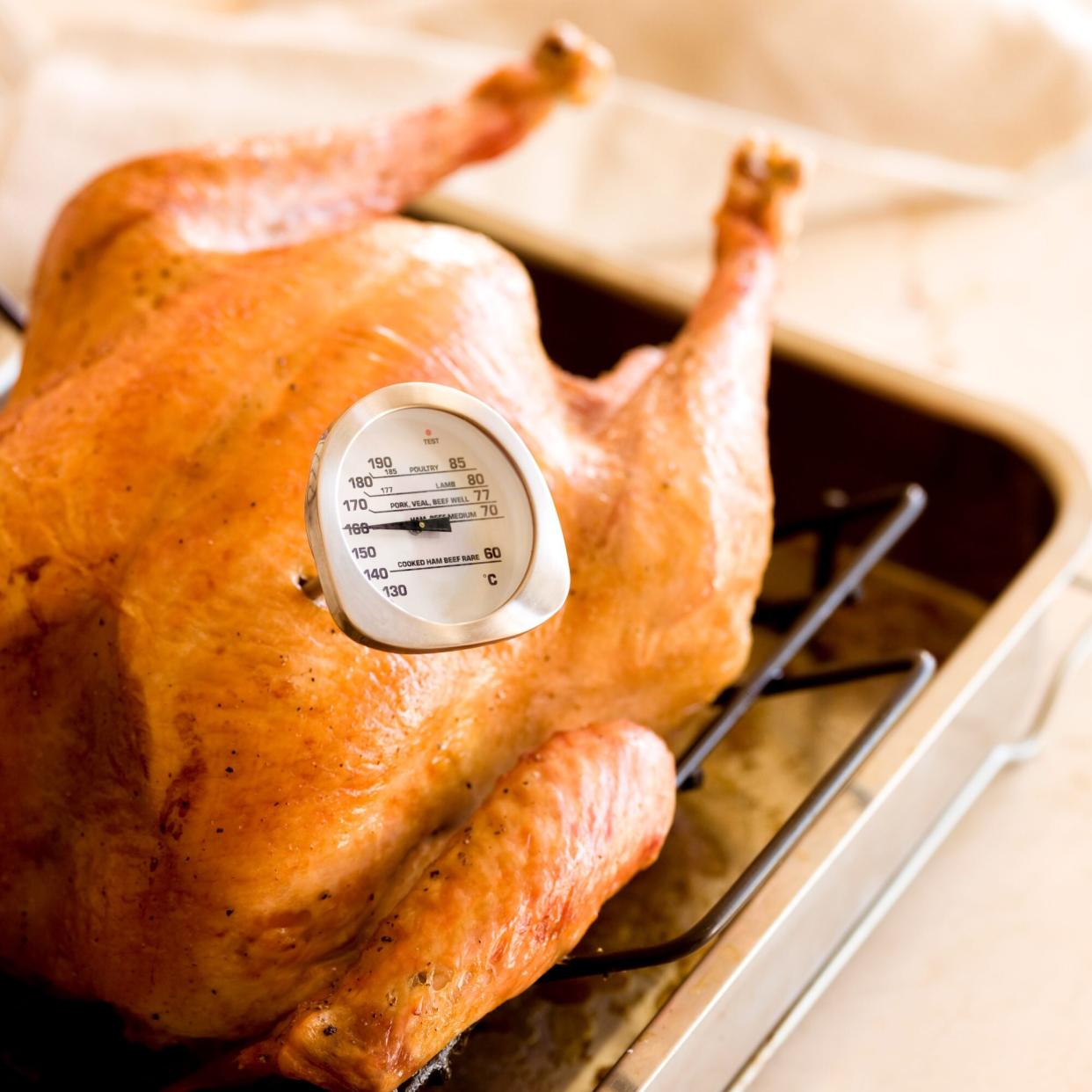The Right Way to Use a Meat Thermometer for Perfectly Cooked Beef, Chicken, and Pork

Annabelle Breakey / GETTY IMAGES
TABLE OF CONTENTS
On This Page
Why You Need One
How to Use
Temperature by Meat
Accuracy
From hearty beef tacos to succulent ribs, meat recipes are the centerpiece of many meals, which is why you turn your focus to achieving the perfect color and texture when preparing them. In addition to perfecting these aspects of the dish, it's important to incorporate a meat thermometer into your cooking process; this will ensure that your beautiful meal is also safe to eat. That's why learning how to properly use a meat thermometer—including where to insert it for different cuts and what meat temperatures to look for—is so important.
Related: Our Step-by-Step Guide to Spatchcocking a Chicken
Why You Should Use a Meat Thermometer
When cooking meat, its internal temperature must be high enough to kill harmful microorganisms. This is essential for preventing foodborne illness and ensuring the dish is safe to eat. However, it's not possible to determine if meat has reached a safe minimum internal temperature by simply looking at its texture and color. According to the United States Department of Agriculture (USDA), some meat (such as ground beef) can change color before the illness-causing microorganisms are destroyed. So, it's crucial to use a meat thermometer, which allows you to confirm the exact internal temperature of the meat.
How to Use a Meat Thermometer
Whether you're a beginner home cook or grilling enthusiast, adding a meat thermometer to your kitchen toolkit is key for staying safe. Meat thermometers are available in both dial and digital form—but keep the latter away from water unless it's waterproof, says Catie Beauchamp, PhD., the vice president of food science, quality, and safety at ButcherBox.
To use a meat thermometer, "insert the end of the probe into the thickest part of the meat product, at least 2 inches, without touching fat or bone," says Beauchamp.
Dial thermometers can be read after 20 seconds or once the temperature has stabilized, while digital thermometers take about five seconds to register. The digital version can even read an accurate temperature when inserted a half-inch deep, making it especially ideal for small and thin cuts, notes Beauchamp. With that in mind, "for cuts of meat like patties and thin cutlets, insert the probe into the side of the portion so that the probe reaches the center," says Beauchamp.
What Temperature Should Your Meat Thermometer Read?
According to the USDA, different cuts of meat should reach the following safe minimum internal temperatures:
Remember that a meat product will continue to cook for a few minutes after it is removed from the heat source, such as the oven or grill. The best practice is to confirm the internal temperature within three minutes of removing the meat, says Beauchamp.
How to Check Your Meat Thermometer's Accuracy
For optimal results, check the accuracy of your meat thermometer on a regular basis, says Beauchamp. To do this, add ice to a deep container (such as a tall drinking glass); then, fill it with water until it reaches the top. Stir the mixture, let it stand for three minutes, and submerge the thermometer. It should register a temperature of 32 degrees. If not, calibrate the thermometer according to the manufacturer's instructions, says Beauchamp. If this does not work, avoid using it and purchase a replacement thermometer.
